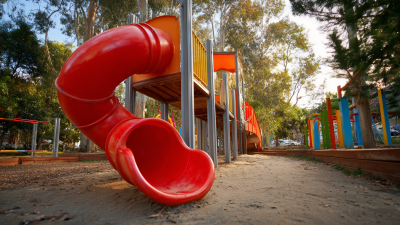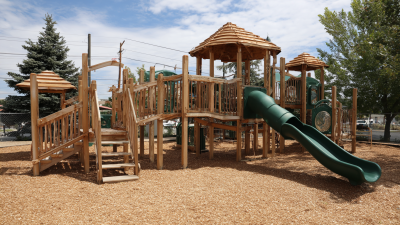 +86-13901441113
+86-13901441113




In today’s fast-paced digital world, the importance of outdoor play for children cannot be overstated. Playgrounds in parks serve as essential spaces that foster creativity, physical health, and social interaction among kids. These vibrant environments encourage children to leave their screens behind and explore the outdoors, engaging in imaginative play and cooperative activities. Research has consistently shown that outdoor play is crucial for developing essential life skills, boosting emotional well-being, and promoting overall physical fitness.

Furthermore, playgrounds in parks are not just safe zones for children but also dynamic community hubs that bring families together, enriching local neighborhoods. This article will explore the numerous benefits of playgrounds in parks, highlighting why these outdoor spaces are indispensable for the healthy development of children in our increasingly urbanized world.
Creating safe and engaging playground spaces in parks involves careful planning and consideration of various factors that promote children's well-being. First and foremost, selecting the right materials is crucial. Using non-toxic, durable materials ensures that playground equipment can withstand the elements while keeping children safe from harmful substances. Additionally, incorporating soft ground cover, such as rubber mulch or grass, can significantly reduce the risk of injuries from falls.
Beyond safety, designing inclusive playgrounds that cater to children of all abilities fosters a sense of belonging and encourages social interaction. Incorporating features like wheelchair-accessible swings, sensory play panels, and varied climbing structures allows every child to engage in play regardless of their physical capabilities. Furthermore, incorporating natural elements, such as trees and gardens, not only enhances the aesthetic appeal but also promotes exploration and imaginative play, making playgrounds vibrant and inviting spaces for children.

When designing playgrounds in parks, the selection of equipment tailored to different age groups is essential for fostering safe and enriching outdoor play experiences. For toddlers, equipment should prioritize safety and developmental needs. Soft surfaces, low climbing structures, and interactive elements like sensory panels help young children explore their environment while minimizing the risk of injury. Additionally, gentle slides and small swings ensure that they can engage in play that meets their physical capabilities.

As children grow, the complexity of playground equipment can increase. For preschool and early elementary-aged kids, climbing structures with varying heights, balance beams, and more challenging slides encourage physical development and social interaction. It’s vital to incorporate features that promote cooperation and imaginative play, such as group swings and themed play structures. Moreover, incorporating equipment for older children, such as climbing walls or zip lines, not only provides excitement but also develops their strength and agility. By carefully selecting age-appropriate equipment, parks can create inclusive spaces that cater to the diverse needs of children, promoting healthy outdoor play for all.
Playgrounds serve as vital spaces for children to engage in outdoor play, fostering not only physical development but also social skills. According to a report from the National Association for the Education of Young Children, children who actively engage in play with peers demonstrate improved social interaction skills, such as sharing and teamwork. These environments allow children to collaborate on games, negotiate rules, and collectively solve problems, which are crucial elements for developing interpersonal relationships.
To fully harness the benefits of playgrounds in fostering social interaction, consider incorporating structured activities that encourage teamwork. For instance, group games like tag or obstacle courses can promote cooperation and communication among children. Additionally, creating diverse play areas that cater to a variety of interests—such as climbing structures, swings, and imaginative play zones—can help attract more children to interact with each other.
**Tips for Encouraging Interaction:**
1. Organize regular community events at the playground, such as family picnics or sports days, to bring families together and encourage kids to meet new friends.
2. Equip playgrounds with features that stimulate collaborative play, such as teeter-totters or larger play structures that require multiple children to operate together.
3. Engage parents and caregivers in supervising and facilitating play, guiding children in sharing and turn-taking to enhance their social skills.
| Dimension | Description | Benefits |
|---|---|---|
| Physical Health | Encourages physical activity through climbing, running, and playing. | Improves cardiovascular health, builds strength and coordination. |
| Social Skills | Provides opportunities for children to interact and collaborate. | Enhances communication, teamwork, and conflict resolution skills. |
| Cognitive Development | Stimulates problem-solving and critical thinking through play. | Encourages creativity and imagination in a fun environment. |
| Emotional Well-being | Allows children to express their feelings and manage stress. | Promotes self-esteem and resilience through play experiences. |
| Inclusivity | Designed to accommodate children of all abilities and backgrounds. | Fosters a sense of belonging and community among diverse groups. |
Integrating nature into playground design is essential for promoting holistic development in children. Studies on nature play in early childhood education have shown that environments enriched with natural elements provide numerous benefits, including improved physical health, cognitive growth, and emotional well-being. By incorporating features such as trees, rocks, and water, playgrounds can stimulate imaginative play and encourage children to engage with their surroundings, fostering a deeper connection to nature.
Tips: When designing a playground, consider adding natural features like diverse plant species and interactive elements that promote exploration. Additionally, allow for flexible and open-ended play opportunities, which can enhance children's creativity and problem-solving skills.
Incorporating agroecological principles into playground design can also create sustainable and enriching play environments. By promoting biodiversity through the use of native plants and sustainable materials, parks can support local ecosystems while providing children with authentic learning experiences. Engaging children in nature-based activities not only nurtures their development but also instills an appreciation for environmental stewardship from an early age.
Tips: Collaborate with landscape designers who understand agroecology to create functional and biodiverse playground spaces. Organizing community workshops can help instill a sense of ownership and responsibility towards these natural play areas.
Outdoor play is essential for children's development, offering numerous benefits that promote active play and physical health. According to a report from the National Association for Sport and Physical Education, children who engage in outdoor play for at least 60 minutes a day show improvements in physical health, cognitive skills, and emotional wellbeing. Engaging children in structured activities like the "Little Crab Creative Crawling" recently held at a kindergarten emphasizes the importance of fun in exercise, reinforcing how engaging games can motivate kids to stay active.
Moreover, promoting active play through well-designed playgrounds in parks can lead to enhanced community health. The CDC highlights that children who play frequently outdoors are less likely to suffer from obesity, depression, and anxiety. Initiatives in various regions, such as extending recess time or introducing innovative outdoor activities, have shown promise in boosting children's physical activity levels. Schools and communities that prioritize outdoor play by creating safe, enjoyable playground environments contribute significantly to developing resilient, healthier future generations.
This chart illustrates the various benefits of playgrounds in parks, highlighting their impact on children's physical health, social skills, and emotional well-being.





